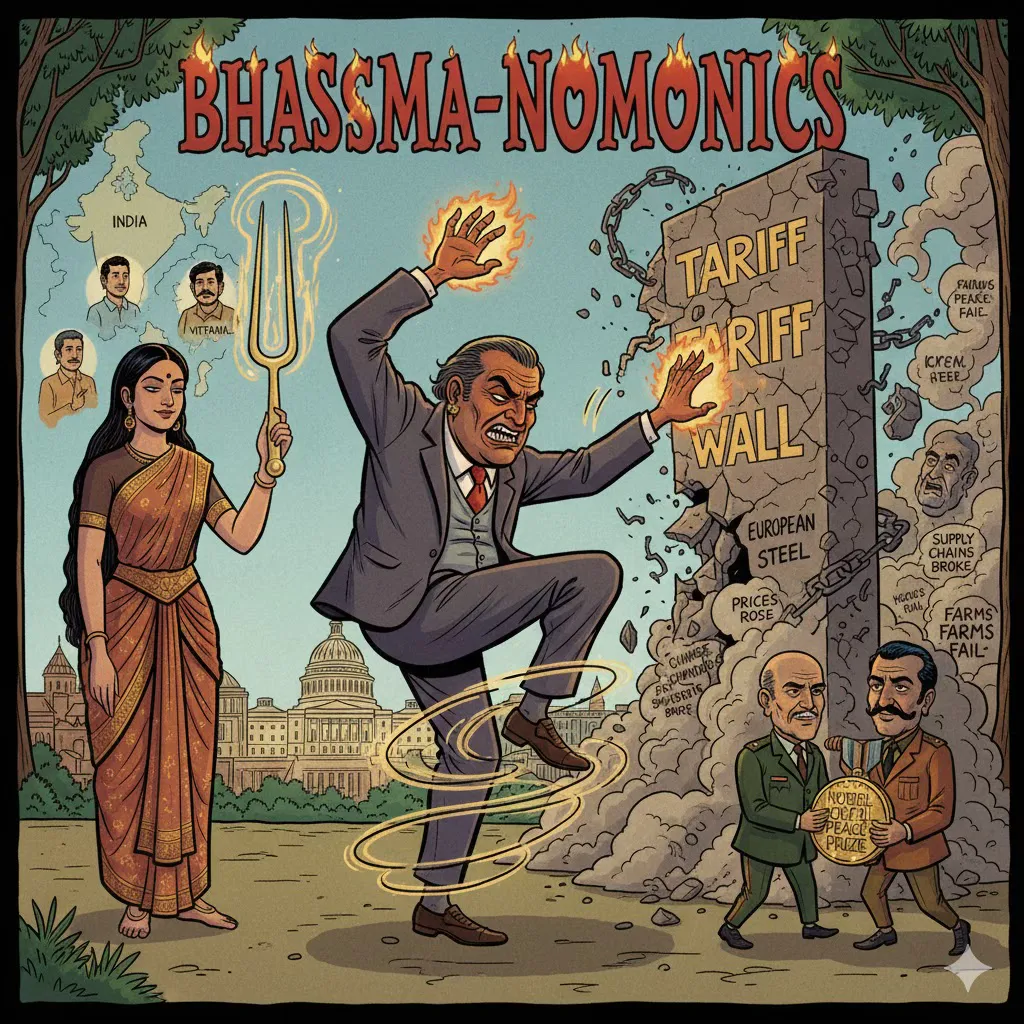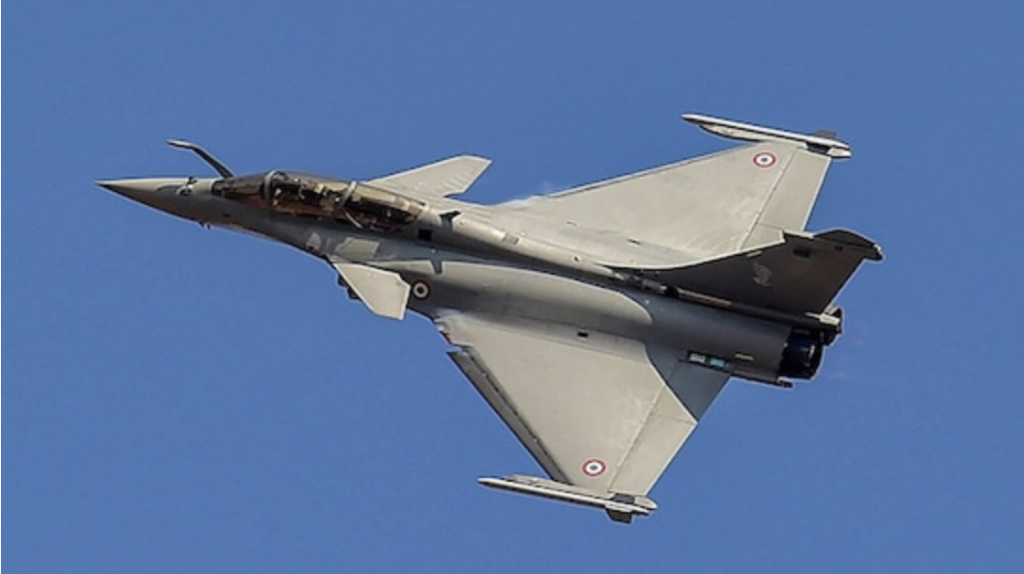
A lot has been spoken and written about the politicisation of the Armed Forces in the recent past. The latest is a recent article in Deccan Herald by AVS Namboodiri which claims that in the recent past—presumably during the tenure of the current NDA government—”politicisation of the wrong kind, of a party-political or ideological nature, sometimes revolving around a political personality” is now affecting the Armed Forces. This piece aims to dissect the narrative about the politicisation of the Armed Forces in general and specifically examine the veracity of the claims made in this article, since it represents typical arguments given in favour of that narrative
Understanding Civil-Military Relations in a Democracy
First, it is necessary to establish a clear understanding of what constitutes politicisation and the proper relationship between the Armed Forces and the government.
In a democracy, a political party presents a manifesto laying down their intended policies and programmes to the electorate. Each party’s manifesto is based on the party’s ideology and beliefs on what’s the best for the nation. The party elected to form the government then formulates those stated policies and puts them into action. Once in office, it can no longer be viewed merely as a political party and it’s policies can not be viewed merely as political ideology. It is transformed into a legally elected government by the will of the majority of the people.
All instruments of the government are mandated by the people to follow the instructions of the government. Needless to say, various functionaries are within their rights to advise the government on the pros and cons of policies and decisions. The final decision, however, rests with the government, as does the accountability for the outcome of those decisions. The ultimate test of that accountability is the next election, when the people decide whether they agree with the policies of the past five years by either re-electing the government or throwing it out of power.
The Armed Forces are one of the organs of the nation through which the government exercises its security policies.It is incumbent on the Armed Forces to implement the policies of the government. Individual commanders who strongly feel that any such policies are inimical to national interest have the option of resigning—as Gen Thimmayya did in 1959 when he had a strong disagreement with the then Defence Minister VK Menon regarding the handling of the Chinese situation. Barring resignation, the military leadership in a healthy democracy has no option other than carrying out the orders of the government.
What Has Changed? Examining the Manifestos
Given this framework, let us examine what apparent changes have led to claims of politicisation. To do so, it is necessary to look at the election manifestos regarding stated policies on security and the Armed Forces.
BJP Manifestos: 2014 and 2019
In the 2014 manifesto, three pages were devoted to national security and the Armed Forces. Key points included:
- Greater participation of Armed Forces in the Ministry of Defence decision-making process
- Implementation of One Rank One Pension for Armed Forces personnel
- Construction of a War Memorial to recognise and honour the gallantry and sacrifice of soldiers
- Bolstering India’s indigenous arms industry and DRDO
- Revision and updation of the country’s nuclear doctrine
The 2019 manifesto stated that India’s security doctrine would be solely guided by national security interests, with zero tolerance against terrorism and a free hand to security forces in combating terrorism. It emphasised continued focus on operational readiness through induction of equipment and indigenisation of defence production.
Congress Manifestos: A Contrast
In contrast, the 2014 Congress manifesto has almost no clearly stated agenda for national security or the Armed Forces. Their 2019 manifesto spoke about security in generalised terms, the only specifics being the scrapping of the Agnipath scheme and institutionalising the selection process of the CDS.
A Clear Policy Difference
From the above, it is apparent that the BJP came to power with a clear vision of how they wanted the national security apparatus to function, including greater integration of the Armed Forces in decision-making and a more muscular security doctrine. Most of the points listed have either been carried out or are under implementation.
While erstwhile governments kept the Armed Forces at an arm’s length, the current dispensation has allowed it to become part of the decision-making process and paid closer attention to its functioning. Both of these are well within its prerogative.
It is this closer interface between the government and the Armed Forces—as opposed to the latter virtually functioning in a silo hitherto—that has likely led to allegations of politicisation. What appears to critics as politicisation may in fact be the implementation of an explicitly stated security policy that differs fundamentally from previous approaches. To examine this theory, let us analyse the specific allegations made by Namboodiri.
Analysing Specific Allegations
The Cult of Personality?
Namboodiri argues that “politicisation of the wrong kind, of a party-political or ideological nature, sometimes revolving around a political personality” is now affecting the Armed Forces. While he does not specify the personality, it is reasonable to assume he is referring to Prime Minister Modi.
In the past, Prime Ministers rarely visited forward troops, except in times of war. One of them even used military vessels and resources for a private family vacation. The current Prime Minister changed that trend—visiting more formations, air bases and ships than all the rest put together would have. He has even spent every Diwali since becoming Prime Minister with troops in some distant frontier, including recently on board INS Vikrant.
Do such visits serve to bolster the morale of the troops? Or do they contribute to establishing a cult of personality? Or both? Does it give him a political advantage? And if it does, is it legally, ethically or morally wrong for him to do so? That is for the reader to decide.
Supersession of Senior Officers
Namboodiri’s next point concerns Late Gen Rawat’s appointment as CDS, superseding two officers senior to him. He has a valid point here, since the principle of seniority has generally been followed in appointing the COAS and other senior military officers.
However, precedence for such supersession exists from the Congress era:
- In 1972, Gen GG Bewoor was appointed COAS, superseding Lt Gen PS Bhagat, a Victoria Cross awardee
- In 1983, Lt Gen SK Sinha was crossed over to appoint Gen AS Vaidya as COAS
- In 1988, Air Marshal SK Mehra was appointed CAS, superseding Air Marshal MM Singh
The appointments in the Armed Forces are technically the prerogative of the government. While the prudence of overriding seniority can be debated, Namboodiri’s assertion that Gen Rawat was “considered to be overly responsive to the government’s sensitivities and demands” is intriguing. As established earlier, implementing government decisions—after providing professional advice—is precisely the job of the COAS. A COAS who is responsive to government orders is the norm, not an exception. The alternative—of the military acting independently or overriding civilian authority—is unthinkable in a democracy.
The Valid Concern: Canvassing for Position
Where Namboodiri has a genuine point—perhaps without fully realising it—is this: by setting aside the well-established practice of adhering to seniority, the government has sent a problematic message.
The adherence to seniority had solid reasoning. Given the pyramidal structure of armed forces and the absence of tangible measurable deliverables in peacetime, determining who is more competent for promotion becomes a subjective decision. Setting aside seniority has opened up the possibility of senior officers in line for promotion trying to curry favour with the government.
Whether this is actually happening would be difficult to determine for external observers. One hopes it is not the case. This is the only substantive concern raised in Namboodiri’s article that merits serious attention and rectification.
Government Taking Credit for Military Achievements
Namboodiri’s next assertion concerns the government taking credit for the achievements of the Armed Forces. Two points need to be made here.
First, the decision to take strong action in response to provocation through cross-border terrorism is a direct outcome of the muscular security doctrine outlined in the BJP manifesto. This stands in contrast to responses after earlier attacks such as the Mumbai attack on 26/11 and the Parliament attack, when military action was not authorised.
Second, while the success of any operation is undoubtedly an achievement of the Armed Forces, they require authorisation from the government to undertake the operation itself. Each has a distinct and essential role: the government provides policy direction and authorisation; the Armed Forces execute operations. Acknowledging the government’s role does not diminish the credit due to the Armed Forces.
Religious Symbols and Ceremonies
Namboodiri talks about changes in SOPs and inclusion of religious symbols such as ‘aartis’, ‘Om’ and ‘Bharat Mata ki Jai’ in parades and other functions. Here his knowledge about the Armed Forces seems limited, as such practices are not new.
Religious ceremonies are part and parcel of military life. Before every field firing, the unit pandit ji or granthi performs prayers for successful and safe conduct. Shastra pooja takes place in every unit on Dussehra. Different Regiments have religion based war cries depending on troop composition, including religious chants such as “Har Har Mahadev”, “Bole So Nihal Sat Sri Akal”, “Jai Mahakali, Aayo Gorkhali”, “Jwala Mata ki Jai” and “Raja Ram Chandra ki Jai”. In many Regiments, troops greet officers with “Ram Ram Saab”. When the President confers Regimental colours to a unit, they are consecrated by religious teachers during the ceremonial parade.
All these are age-old practices. It is unclear what change in SOP Namboodiri is referring to.
Public Statements by Service Chiefs
Namboodiri’s final concern is public statements made by Army and Air Chiefs, issuing threats to adversaries and discussing damages during recent operations—a departure, he says, from previous practices.
However, statements by service chiefs are expressions of government policy, issued with government consent. Greater aggression in these statements reflects the muscular security policy adopted by the government. Restrained statements by predecessors reflected the policy of restraint by then governments.
This must also be viewed in the context of the social media age, where appropriate messaging is part of psychological warfare strategy. Such statements carry more credibility when coming directly from the executors of policy.
Conclusion: Policy Implementation, Not Politicisation
All the instances cited by Namboodiri to suggest that the Armed Forces are being politicised are in fact indicators of changed security policy rather than party-political ideology infiltrating the military.
The government’s policies do stem from the ideology of the party forming the government—that is how democracy works. But it is not for service chiefs to sit in judgement on policy, irrespective of its source. As long as it is the enunciated policy of the government, they are duty-bound to implement it or, if they believe it is against national interest, resign.
What critics perceive as party ideology is in fact government policy. Government policy is national policy that the Armed Forces are duty-bound to implement. The closer integration of the Armed Forces in decision-making, the more muscular security doctrine, and the more assertive public messaging all flow from the explicitly stated manifesto commitments that brought the current government to power.
The only legitimate concern raised is the bypassing of seniority in promotions to senior ranks, which could lead to officers canvassing political leadership for appointments. This is something the government must examine and rectify to preserve the professional integrity of military appointments.


















